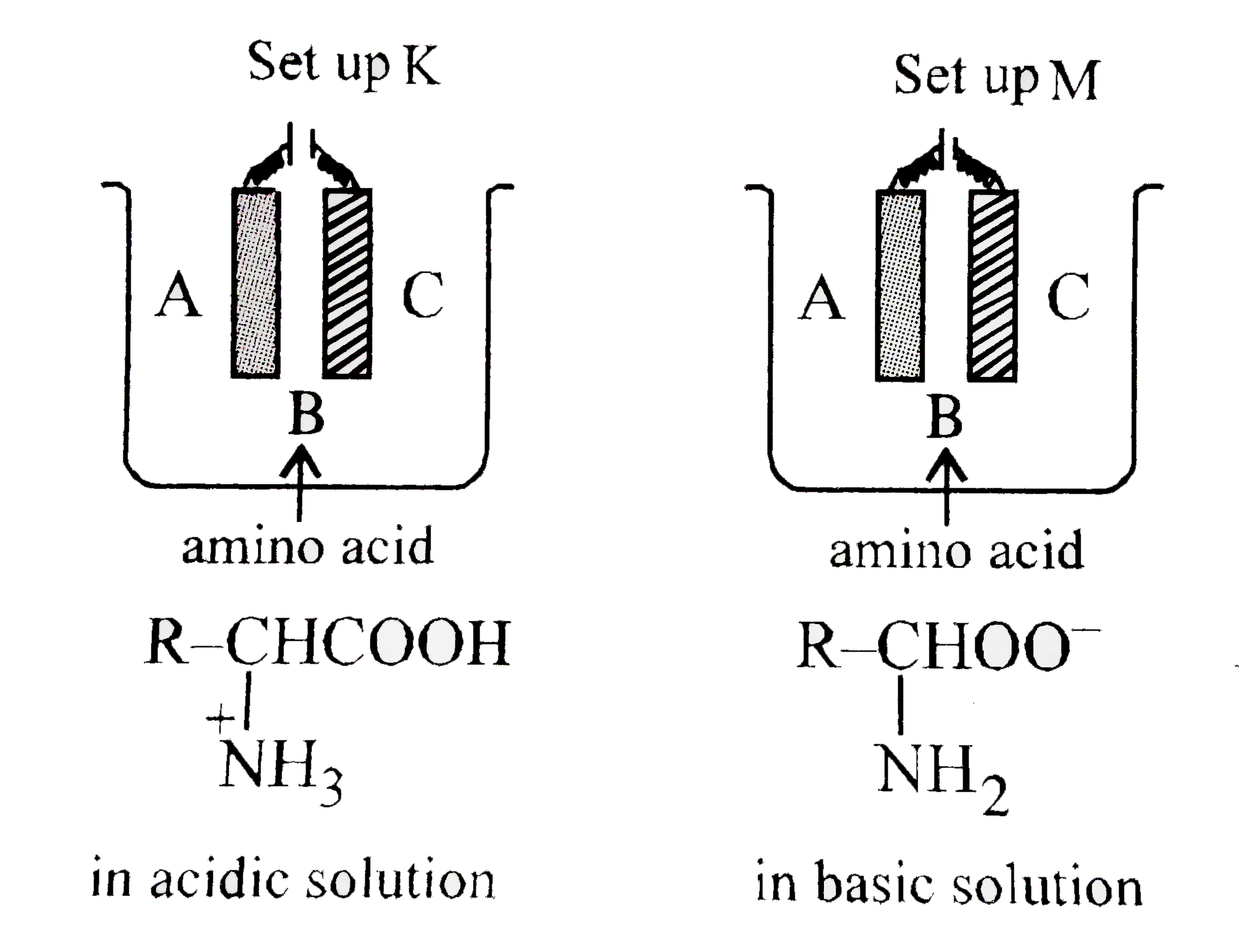Reason from S DINESH & CO CHEMISTRY (HINGLISH) Chapter 31:BIOMOLECULES for Class 11
| Class 11 | CHEMISTRY |
| Chapter | BIOMOLECULES |
| S DINESH & CO CHEMISTRY (HINGLISH) | Reason |
| Medium | English |
| Academic Year | 2023-2024 |
Question 245
Which of the following is/are true?
(a) Sucrose is a non reducing sugar (b) Glucose is oxidised by bromine water (c) Glucose rotates plane polarized light in clock-wise direction (d) Fructose is oxidised by bromine water.
Select the correct answer using the codes given below:View SolutionQuestion 285
Pick out the incorrect statements (s) from the following
(1) Glucose exists in two different crystalline forms, α-D-glucose and β-D-glucose
(2) α-D-glucose and β-D-glucose are anomers
(3) α-D-glucose and β-D-glucose are enantiomers
(4) Cellulose is a straight chain polysaccharide made of only β-D-glucose units
(5) Starch is a mixture of amylose and amylopecting, both contain unbranched chain α-D-glucose unit View SolutionQuestion 318
A tetrapeptide has −COOH group on alanine. This produces glycine (Gly), valine (Val), phenyl alanine (Phe) and alanine (Ala), on complete hydrolysis. For this tetrapeptide, the number of possible sequences (primary structures) with −NH2 group attached to a chiral centre is :View SolutionQuestion 330
Every amino acids has a carboxyl group and an amino and each group can exist ian acidic form or a basic form depending on the pH of the solution in which the amino acid is dissolved. The carboxyl groups of the amino acids have pka values of approximately 2, the protonated amino group have pka values neare 9. therefore, in a very acidic solutions (pH near zero), both the groups will be in their acidic forms. At a pH of 7 (which is greater than the pka of the protonated amino group), the carboxyl group will be in its basic form and the amino group will be in its acidic form. in a strongly basic solution (say pH=11) both the groups will be in the basic form. R−CH2∣NH2−O∣∣C−OH(neutral not isolated)H+⇐⇒R−CH∣+NH3−OH(A)⇔R−C+∣NH3−O∣∣C−O−(B)+H+⇔R−CH∣NH2−O∣∣C−O(C)
Form A (cationic ) of an amino group exists in View SolutionQuestion 331
Every amino acids has a carboxyl group and an amino and each group can exist ian acidic form or a basic form depending on the pH of the solution in which the amino acid is dissolved. The carboxyl groups of the amino acids have pka values of approximately 2, the protonated amino group have pka values neare 9. therefore, in a very acidic solutions (pH near zero), both the groups will be in their acidic forms. At a pH of 7 (which is greater than the pka of the protonated amino group), the carboxyl group will be in its basic form and the amino group will be in its acidic form. in a strongly basic solution (say pH=11) both the groups will be in the basic form. R−CH2∣NH2−O∣∣C−OH(neutral not isolated)H+⇐⇒R−CH∣+NH3−OH(A)⇔R−C+∣NH3−O∣∣C−O−(B)+H+⇔R−CH∣NH2−O∣∣C−O(C)
For C(anionic) of an amino acid exists in View SolutionQuestion 332
Every amino acids has a carboxyl group and an amino and each group can exist ian acidic form or a basic form depending on the pH of the solution in which the amino acid is dissolved. The carboxyl groups of the amino acids have pka values of approximately 2, the protonated amino group have pka values neare 9. therefore, in a very acidic solutions (pH near zero), both the groups will be in their acidic forms. At a pH of 7 (which is greater than the pka of the protonated amino group), the carboxyl group will be in its basic form and the amino group will be in its acidic form. in a strongly basic solution (say pH=11) both the groups will be in the basic form. R−CH2∣NH2−O∣∣C−OH(neutral not isolated)H+⇐⇒R−CH∣+NH3−OH(A)⇔R−C+∣NH3−O∣∣C−O−(B)+H+⇔R−CH∣NH2−O∣∣C−O(C)
For B is called View Solution
All Exercises from S DINESH & CO CHEMISTRY (HINGLISH) Class 11 CHEMISTRY BIOMOLECULES
- ALL QUESTIONS
- (A) SUCROSE IS A NON REDUCING SUGAR <BR> (B) GLUCOSE IS OXIDISED BY BROMINE WATER <BR> (C) GLUCOSE ROTATES PLANE POLARIZED LIGHT IN CLOCK-WISE DIRECTION <BR> (D) FRUCTOSE IS OXIDISED BY BROMINE WATER.
- INTERGER TYPE
- LINKED COMPREHENSION
- MATRIX
- REASON
- REVISION
- ALL QUESTIONS
- (A) SUCROSE IS A NON REDUCING SUGAR <BR> (B) GLUCOSE IS OXIDISED BY BROMINE WATER <BR> (C) GLUCOSE ROTATES PLANE POLARIZED LIGHT IN CLOCK-WISE DIRECTION <BR> (D) FRUCTOSE IS OXIDISED BY BROMINE WATER.
- INTERGER TYPE
- LINKED COMPREHENSION
- MATRIX
- REASON
- REVISION
- ALL QUESTIONS
- (A) SUCROSE IS A NON REDUCING SUGAR <BR> (B) GLUCOSE IS OXIDISED BY BROMINE WATER <BR> (C) GLUCOSE ROTATES PLANE POLARIZED LIGHT IN CLOCK-WISE DIRECTION <BR> (D) FRUCTOSE IS OXIDISED BY BROMINE WATER.
- INTERGER TYPE
- LINKED COMPREHENSION
- MATRIX
- REASON
- REVISION
- ALL QUESTIONS
- (A) SUCROSE IS A NON REDUCING SUGAR <BR> (B) GLUCOSE IS OXIDISED BY BROMINE WATER <BR> (C) GLUCOSE ROTATES PLANE POLARIZED LIGHT IN CLOCK-WISE DIRECTION <BR> (D) FRUCTOSE IS OXIDISED BY BROMINE WATER.
- INTERGER TYPE
- LINKED COMPREHENSION
- MATRIX
- REASON
- REVISION











 .
.